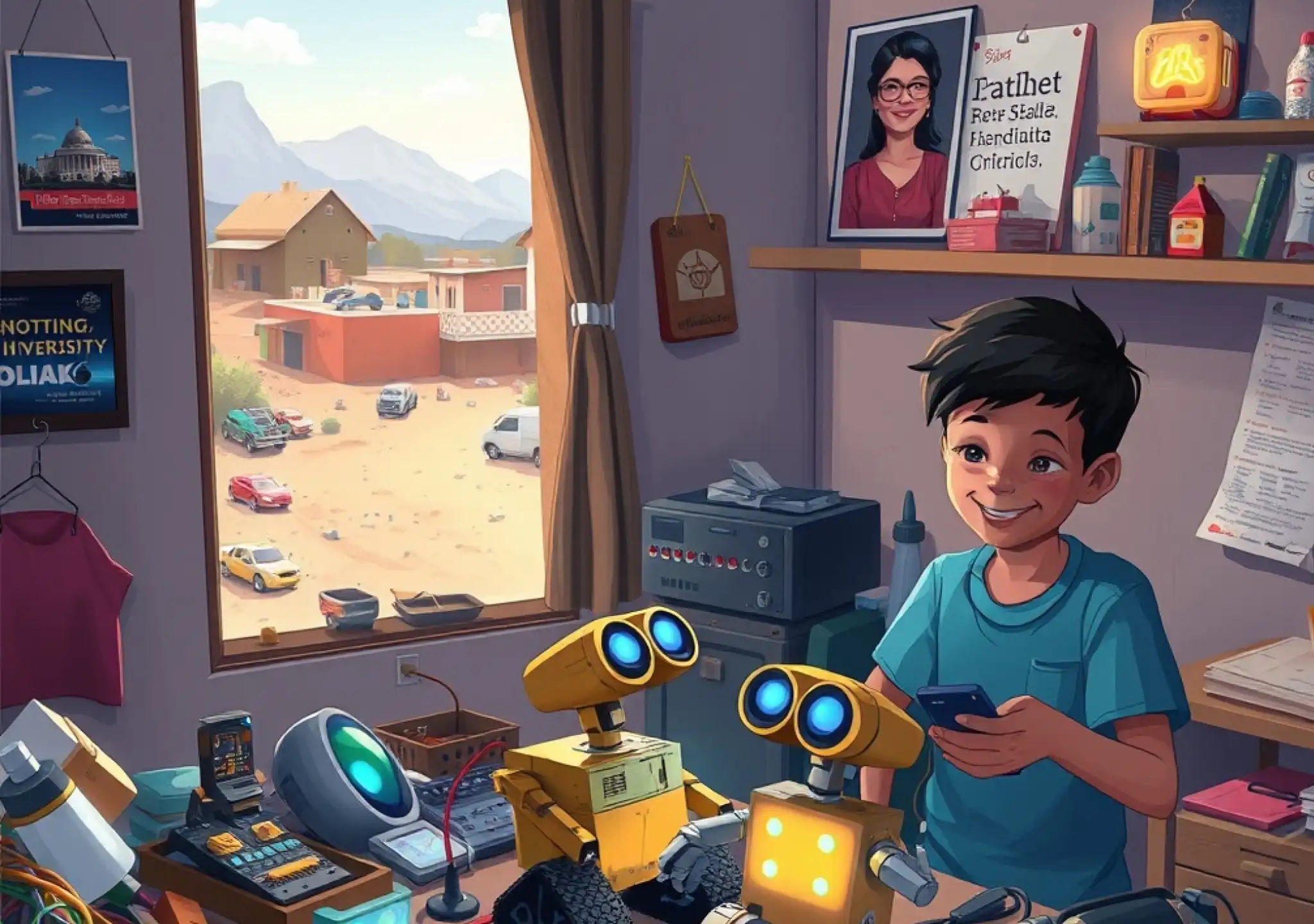From Trash to Technology: A Young Innovator’s Journey
In the small town of Patacamaya, Bolivia, 17-year-old Esteban Quispe is hard at work at his computer. Surrounded by discarded electronics—wires, bulbs, and metal parts—he transforms waste into functioning robots in a workshop his parents helped set up at home. All the materials come from the local dump, which Esteban visits weekly in search of components.
A self-taught inventor, Esteban has created a range of gadgets from electronic waste. Among them is a toy car with blinking lights inspired by the iconic KITT vehicle from Knight Rider, a 3D LED cube, and his most cherished creation: a square robot modeled after the Pixar character Wall-E.
A Local Star with a Global Dream
Esteban lives in Patacamaya, a town of about 12,000 people located 100km from La Paz. Bolivia remains one of South America’s least developed nations, with minimal infrastructure for technological advancement. In this context, Esteban’s ability to build sophisticated robots from scrap has made him well-known locally. His talent gained public attention after he won a high school robotics competition with his Wall-E robot.
The idea for Wall-E came to Esteban back in 2008, when he first saw the animated film. After several failed attempts, he completed the robot in 2014. “I really liked Wall-E’s intelligence and environmental awareness,” he says. “I relate to him. I want to see a cleaner Bolivia.”
His focus on using discarded electronics stems from a desire to address improper waste disposal in his community. “People here don’t really separate their waste,” he notes. “Electronic waste is dangerous, and I wanted to do something meaningful with it.”
A Passion Rooted in Childhood
Esteban’s fascination with mechanics began early. As a child, he watched his father, a former construction worker, build wooden toy cars. At age 10, they collaborated on a small vehicle with working lights. He soon advanced to crafting intricate electronic devices on his own. By age 11, he was selling his early creations on the street, accompanied by his younger brother Hernan and neighborhood kids.
The income helped the family buy school supplies, especially valuable now that Esteban’s father is unable to work due to chronic back pain. Esteban is determined to support his parents and Hernan through his robotic skills. One potential buyer has offered to purchase his Wall-E robot, which he hopes will bring in enough money to help the family.
His mother Teresa proudly shows photos from Esteban’s recent graduation. “He’s always been top of his class,” she says softly. Teresa began working as a child and never had a chance to study. She now prays that her sons can pursue an education abroad.
The Risks of Innovation in a Harsh Environment
Esteban visits the local dump regularly with Hernan to collect parts. “It’s the only place I can find free materials,” he explains. “I can’t afford new ones, and I like the idea of giving discarded electronics a second life.”
Despite the risks, Esteban continues his scavenging trips. He wasn’t aware of the health hazards associated with handling e-waste until journalists pointed them out. “They told me it could affect my lungs and overall health,” he says. “I try to be cautious, but it’s hard to avoid exposure completely.”
As he walks through the dump, navigating piles of debris and smoke, he carefully examines each item before deciding whether to take it. On this day, he finds nothing useful and heads home.
Advancing with Vision and Ingenuity
Back in his workshop, Esteban demonstrates how his Wall-E responds to commands via a custom-built mobile app. He is now working on an upgraded version that can recognize voices, follow instructions, and move autonomously. He hopes to sell it for around 11,000 Bolivianos (roughly $1,600).
Esteban is preparing to start a five-year electromechanics program at the Universidad Católica de La Paz, where he has secured a scholarship. Though excited about moving to the city, he has broader ambitions. “I love Bolivia, but I believe I could achieve more in a country with more resources,” he says, expressing a desire to pursue postgraduate studies in Europe.
His ultimate goal is to return and contribute to his community. “Patacamaya is already growing. More houses are going up, and in five years, it will be very different,” he notes. “I’d like to run my own business here after I finish studying, even if I have to travel for work.”
Inspiration Through Recognition
Esteban is humble about his newfound fame. He sees public interest in his story as a stepping stone rather than a goal. “I’ve been building robots for years, but it was only after the media coverage that I got a scholarship,” he reflects. “I’m not seeking fame, but I hope that by sharing my story, I’ll get more opportunities to study abroad.”
Now on the cusp of his university journey, Esteban is focused on building a brighter future—for himself, his family, and his community.

